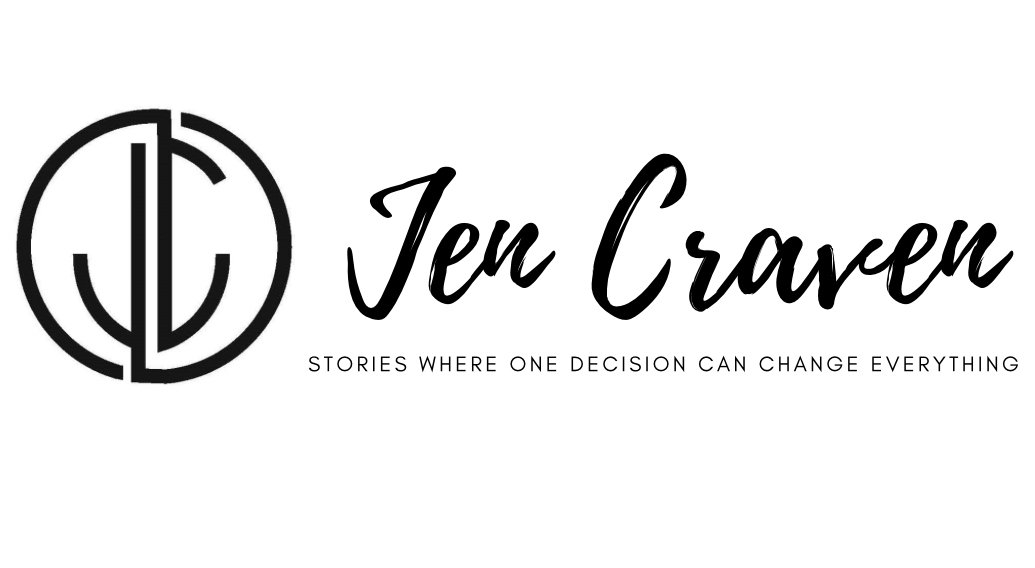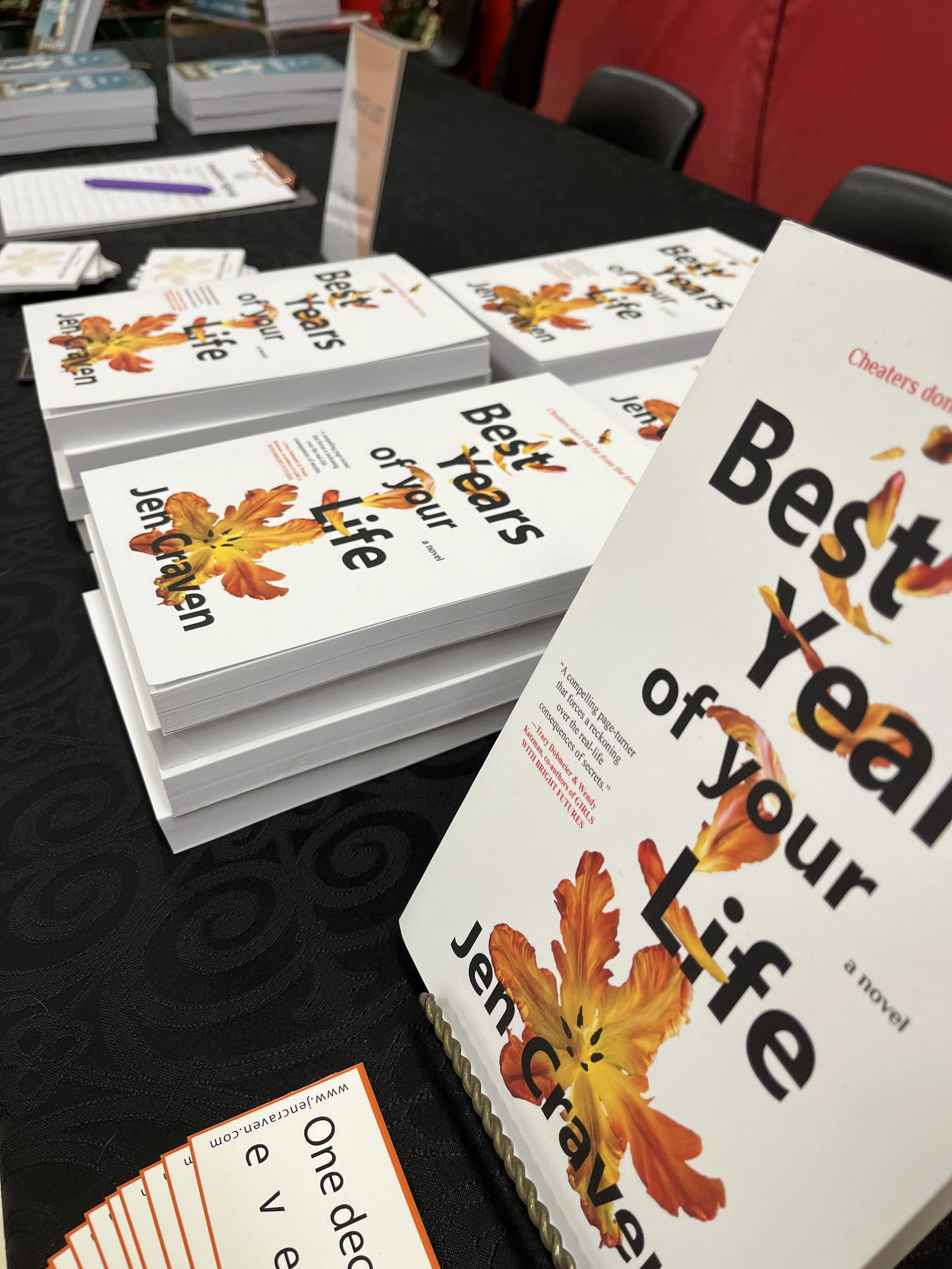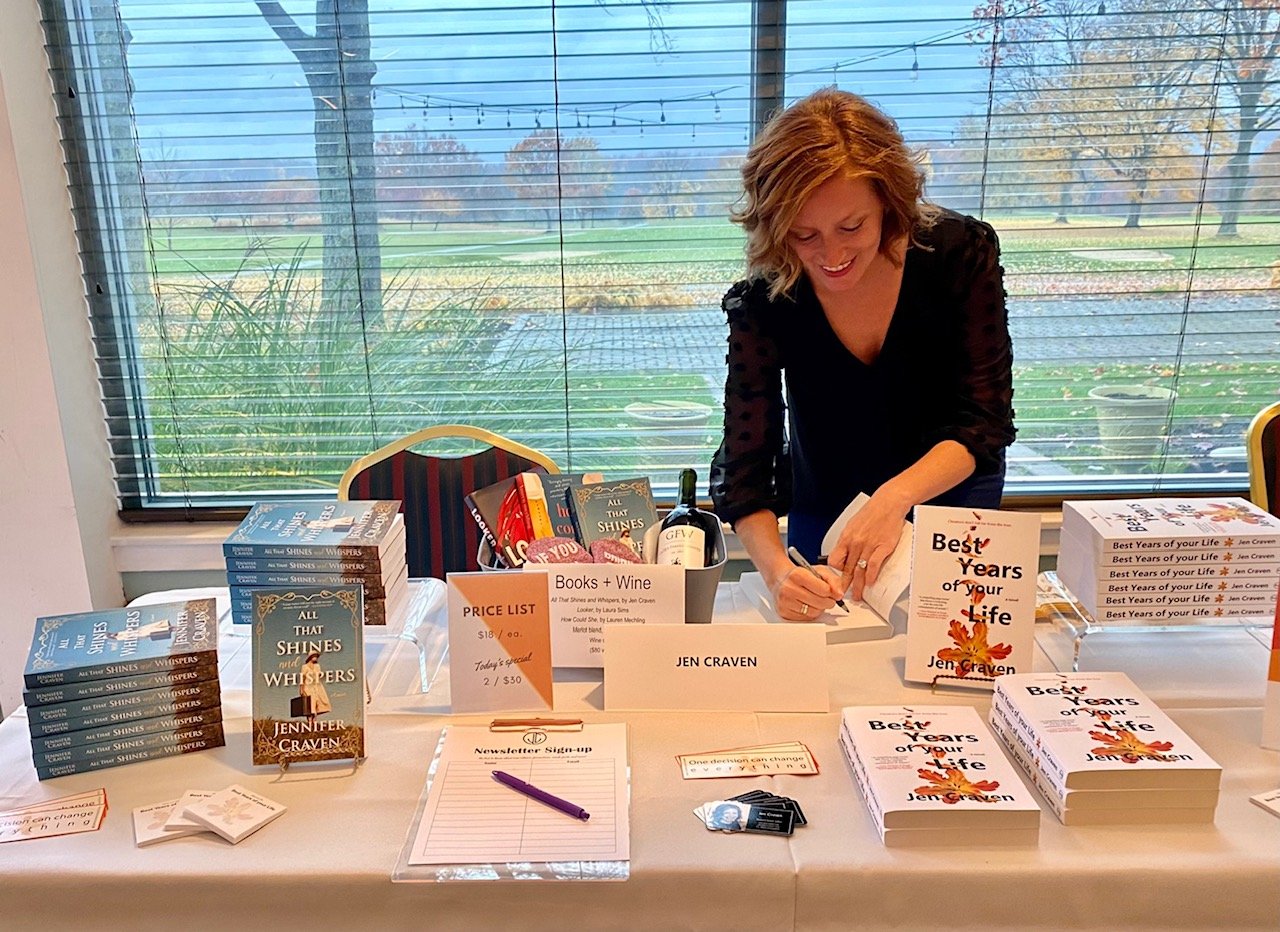The Power of In-Person Events
Signings, readings, fairs…oh my!
Ah, yes. We’re talking about in-person events for authors. Unlike social media, which feels only limitedly personal, meeting readers face-to-face is a whole different experience. Since “Best Years of Your Life” released at the end of August, I’ve done 18 in-person events, including book signings, expos and fairs, book clubs, podcast interviews and Instagram Lives with other authors. That’s a lot to cram into three months! But here’s my big takeaway… these events are far more lucrative and beneficial than posting a link on social and telling people to click on it.
There’s a human element that comes from meeting and talking to readers in person. Not only can you chat about your book (let’s be honest…gaining readership and sales is ultimately the goal), but you have the chance to get feedback from readers, explain your process, discuss the reading/book community. It’s a lot easier to display your passion in person than through a screen. And enthusiasm is contagious—when someone can feel the excitement, they’re more likely to be excited too. So talk up your book! Let curious people touch, feel and take a peek. These interactions are invaluable!
In-person events are a great way to sell books. There are many consumers who boycott The Big A, and prefer to shop small—or even from the source herself. So how do you go about setting up these events? Here’s a few tips:
Get in touch with your local indie bookstore(s) to inquire about book signings (Then read my comprehensive guide so you don’t forget anything!).
Poke around your community pages to see what kind of festivals/fairs/expos would be a good fit. Summer and fall are popular times for these events, but depending on where you live, you can find them year-round.
Tap into the writing community on social media and connect with fellow authors who have launches around yours, or whose book is in the same genre/topic. Talk about collaborating for an event, or teaming up for a digital meet-up like IG Lives or Zoom webinars where you can invite readers to join for discussion.
Find podcasts that relate to your genre or tie into the craft of writing, then pitch yourself/your book as a guest appearance. Many podcasts book months in advance, so you may want to contact them ahead of time if you’re timing it for your book launch. I like to think author interviews are evergreen, especially if you’re discussing publishing and careers—bonus points for name dropping your book even if it’s not new. There are TONS of writing/author-related podcasts, but I’m partial to The Best of Women’s Fiction.
While in-person events are great, they can also be quite exhausting. It takes a lot of energy to be “on” and in sales mode and talking with so many people. That’s why I suggest pacing yourself and filling your schedule only to the limit that’s comfortable for YOU. Some authors can do it all (not really, but you get the point), while others burn out much quicker…and that’s OK. You still have a life outside writing, other responsibilities and hobbies. Think about what you want to get out of the event and whether it’s worth it to you.
The last three months have been a whirlwind, and I’ve loved connecting with readers. That said, I’m looking forward to easing into a quieter December and working on my new novel, which will release mid-to-late 2023.
And then the madness will start all over again.
Ultimate Book Signing Guide
Since the launch of “Best Years of Your Life” two months ago, I’ve heard from fellow indie authors asking about how to go about setting up book signings. What better way to share my personal experience and some tips than writing about it?! Thus, this rundown of securing signings for new releases, along with a checklist of what to bring on the big day.
Step 1: Reach out to your local bookstores
You might think that big chain stores won’t carry indie books, but that’s changing. More and more booksellers are understanding the shifting tide of interest in indie authors and the books they write. When “Best Years” was in pre-launch, I visited my local Barnes & Noble and talked to the store manager. She was not only excited about my book, but agreed on the spot to host a signing once it was released. All it took was for me to ask. And I do think there’s a difference between pitching a book in person versus over email. When you speak with excitement and confidence about your book, it’s hard for others not to be excited too. After all, you’re pitching yourself in a way, not just the book.
Independent bookstores, not surprisingly, are often more open to books outside the catalogs of the Big Five (Four?) publishing houses. I was able to connect with three indie bookstores in my area who were happy to carry my book and schedule a signing.
Step 2: Schedule for peak traffic time
Your goal is to sell books, so it makes logical sense you’d want to schedule your signing for when the greatest number of people frequent the store. Whether that’s a weekend over the lunch hour, or an evening after work, talk to the store owner or manager to get their input—they know their store and shoppers best.
Step 3: Publicize!
Once your signing is booked, take advantage of any and all free marketing to publicize the event. Post on social media, your website, and even send a brief note or press release to local media. Sometimes the store might create a Facebook event, which you can share to your own page. Drumming up interest is important because people can’t come support you if they don’t know where you’ll be. Don’t be shy! This is a crucial part of self-marketing—you have to think of it as a business.
Step 4: Decide on Payment Options
Bookstores will want you to sell their inventory first, but if you happen to dip into your own stock, or are at an event unrelated to a book store, you’ll need to be prepared for taking sales. In my experience, not everyone carries cash these days. So, setting up something like Venmo, PayPal, or using a card reader (I use Square), ensures that you won’t miss capturing a customer just because they don’t have cash on hand.
Step 5: Create a book signing checklist
One of the first questions to ask is whether the store will have their own stock of your book, or whether you should bring your own. If they have the books, how many do they have? I always think it’s better to be safe than sorry, so I typically bring additional inventory with me just in case. You never know how many you’ll sell, and you’d rather have too many on hand than not enough. Additionally, ask the store what your setup will look like and where you’ll be located. Do you need to bring your own table? Do they have room for you to put up a sign or poster on an easel?
I keep all my supplies in a plastic storage tub, which makes it easy for transport and storage. Here’s a list of what I bring to my book signings:
· Books!
· Signing pens—at least two in case one runs out
· Newsletter signup sheet to capture emails
· Book merch: bookmarks, custom post-its, or anything that you’re giving away
· Business cards
· Price sign—frame or put in a plexi stand
· Accepted payment list
· Cash for change
· Square credit card reader
· Fitted table cloth—I learned the hard way at an outside event that the wind isn’t always your friend
· Scissors, tape, pens
Step 6: The day of…
On the day of your signing, be sure to show up early to get set up. There could be people waiting to meet you and buy your book—you don’t want to come flying in at the last second (I did this once after underestimating travel time and parking). Give yourself time to settle in, make sure everything looks good, and put your selling face on. That face? It’s a smile. The more upbeat and positive you are, the more you’ll engage with customers.
When someone buys your book, thank them (of course!), but also use it as a reminder about the importance of reviews. It doesn’t hurt to ask for a review in advance, once you explain how helpful they are for indie authors. People want to help, they want to see you succeed. Tell shoppers where they can find you on social and don’t forget to capture their email for your newsletter.
When the event is over, express your appreciation to the bookstore for hosting you. Forming good connections with booksellers is the best way of hopefully securing another event in the future. Hopefully the experience was mutually beneficial and you’ll be able to return with your next book release! Also, booksellers talk—they’ll share their thoughts on your book signing, so you want to leave with a good impression.
Step 7: Celebrate!
You did it, you had a book signing and you survived! It can be draining to be “on” and talking to people for so long, especially if you’re introverted. So, celebrate! You sold books, met readers, made connections, and got your book into the hands of more people, which is the ultimate goal. Now, go home, relax, and eat a piece of chocolate (or your indulgence of choice).
Book Launch Timeline
With a mere 5 days to go until launch day for Best Years of your Life, I’ve found myself looking back at the whirlwind that was preparing a book launch. I can’t tell you how many times I Googled things (daily) or reached out to author friends who’ve published before me (also daily) for advice. Sometimes it was the simplest question, but being a perfectionist, I wanted to make sure I did everything right.
News flash: There’s no “right” way to go about these things.
With SO MANY options out there when it comes to indie publishing, you could drive yourself crazy (and I did) trying to figure out what to do, when to do it, what to spend money on, etc. etc. etc.
The beauty of indie publishing is that you’re on your own timeline. BUT… that’s also the hard part of indie publishing. It’s both a blessing and a curse. You don’t have a publishing house with experts telling you “Do this today,” “Here’s what we do next,” “Then we’ll do this.”
The past four months have been a crash course in self publishing. Did I get an “A”? (Better yet, did I even pass?). I suppose only time will tell. But like anything new, you’re going to inevitably miss something… something you’ll look back on and wish you’d done differently, or something you wasted time on and know you’ll never do again.
For what it’s worth, given the knowledge I’ve pulled from author friends and online launch plans, here’s how my timeline went down:
3-4 months out
This was when I made the big pivot from querying, pulled back all my manuscripts that were with agents, and decided to go indie. Initially, I set a date for a December release, but once I started planning and getting my ducks in a row, I realized I really wanted my launch to coincide with back-to-school (given that it’s set on a college campus).
Is it possible to launch a book in 3 months? It depends. Books that are traditionally published can be in the planning/launching stage for a year or more. Other indies pump out a new book and bring it to market every other month. I think it all depends on what your goal is for your launch, how much you are able to get done in advance, how much you need to hire out, etc. There truly are so many factors.
By the time I decided to indie publish, my manuscript was complete and the cover was designed (I’m fortunate to be able to make my own covers). I turned my focus to marketing and media, as most outlets require lead time.
I formatted my paperback and e-book and made it available for pre-order through the various retail platforms I chose. Whether to be Amazon-exclusive or “go wide” for e-books is a whole other topic for a whole other blog post!
I contacted authors to inquire about early reviews and cover blurbs. Authors are BUSY people. Some were unable to read and review in my shorter timeframe, but others gladly accepted.
I scheduled a bookstagram blog tour for the month after my book release. Things like this should be booked in advance.
2 months out
I contacted dozens of podcasts that either specialize in women’s fiction, author interviews, or indie books. Many were responsive, some were not. Several booked me now, some are booked out for a while.
I sent a press release to a bunch of news outlets in my area (newspapers, radio, TV, regional magazines).
I reached out to booksellers, mainly within a 2-hour radius of my town, but also nation-wide with the help of contacts I have through writer’s groups. With a well-crafted sell sheet, press release and book cover image, I’ve managed to get my book ordered by a few bookstores that never would have known about me otherwise.
I finished sending out all ARC copies in order to give reviewers time to read.
1 month out
I stopped by local businesses in my town to talk about my book and hand out flyers.
I updated all versions of my book with final edits and typos caught by ARC readers, then ordered a set of final copies to have on hand for launch.
I contacted bookstores about setting up signings post-launch. Good idea to get on the calendar in advance…stores are busy with events!
I signed up for a Goodreads Giveaway to run for 30 days leading up to launch.
1 week out
I’m stressing that I’ve forgotten something critical.
I’m simultaneously freaked out and thrilled with excitement that people will soon be reading my book.
I’m planning a fun dinner to celebrate my book launch (with champagne!)
Post-Launch Plans
You might think launch day is the end-game, but you’d be so so wrong. Yes, launch day is the day you’ve been planning for, counting down to, and now celebrating. But, that’s only the first step. Once the book is live, there’s still work to be done.
Reviews, reviews, reviews. So much of post-launch success depends on reviews. Getting them, though…that’s another story. No one wants to be the annoying person who’s begging for reviews. But at the same time, authors know that’s the best way to help visibility. So, we ask. And we ask again. The more readers understand the importance of reviews, the more likely (I think) they’ll be to leave them. It only takes a minute, but the impact can be huge.
So, here’s my big takeaway looking back at my book launch: Everyone’s experience is going to be different. You make it what you want to make it. You put in as much effort as you choose based on your goals and vision. For me, I never felt rushed or crunched with this timeline. Could I have done more if I would have stuck with December? Perhaps. But I’m happy with this release date and what I was able to do to market the book pre-launch.
Now the real test: Watching my book baby leave its nest and fly into the hands of readers.
Rule #1 of Authorhood: Be a Good Literary Citizen
The farther and farther I travel into my author journey, the more one thing becomes clear: the writing and publishing process is much more collaborative than one might think. Sure, YOU’RE the one to write the actual book, but then what? You’re at the mercy of others.
· Beta readers (who read for free)
· Critique partners (who analyze—often deeply—for free)
· Reviewers (who read and review, often for simply an ARC copy)
· Blurbers (who are willing to put their name/reputation out there for you)
· Writer friends (who share your posts and hype your book)
All of these things are done with an expectation in mind—that if their turn ever rolls around, you’ll do the same. This is called being a good literary citizen: helping out when you can, whether that’s with a service, expertise, time, or just a simple click.
I’ve checked many of these boxes, reading countless manuscripts in various stages of drafts, providing honest feedback with the intent of strengthening the story, celebrating fellow authors on their launch days, and more. I haven’t blurbed a book (yet), but I hope someday that honor will be requested of me and that I’ll be able to say YES. Yes, because I know how important it is to that writer. Yes, because I’ve been in their shoes—as recently as this month.
Over the past few weeks, I’ve reached out to a handful of authors I respect and whose work I admire for a big ask: Will you blurb my book? I’ve received some yes’s and some polite no’s (always due to time conflicts). It’s all a big circle—passing on acts of kindness. The wheel of bringing a book into the world. And I’m so happy to be included, doing my part.
So, to new authors who might be reading, keep this in mind: pay it forward. When someone does something to help you, keep it going by helping someone else. Expand your circle—the writing community is very welcoming, and there’s room for all of us. Be a champion of your own work, but also that of others. When one of us wins, we all win!
Why I Decided to Ditch Querying and Go Indie
It’s no secret the quest to secure a literary agent is a daunting one. You write the book, craft a tight, compelling query letter, summarize your book in an 800-word synopsis, and cross your fingers (and toes) that it’ll be enough to hook a gatekeeper to traditional publishing.
I did all the things, sent out my first round of queries to carefully-researched agents, and within days had multiple requests for pages. With such great momentum out the gates, I felt hopeful for my chances. I posted about it and got many cheers and congrats from the writing community. Amazing! Yay!
Yet my excitement never quite matched theirs, and I now know why: From the beginning, I doubted traditional publishing was the right path for me.
Crazy, right? If you’re going to be a REAL author, you need the agent, the publishing deal from a Big 5 house—right?
Here are a few truths about traditional publishing:
· It’s notoriously slow. Many authors spend 1-2 years querying, then another year on submission. If the book sells, it’s often at least a year (usually longer) until the book hits the shelves.
· There are no guarantees. Just because you secure an agent doesn’t mean you’ll get a publishing deal. Many manuscripts die on submission and never see the light of day.
· There’s less control for authors. When you “get” a publishing deal, it means your agent sold your book to the publisher. Authors relinquish rights, along with a good deal of input on revisions, cover designs, etc.
Let me make one thing very clear: I respect the traditional publishing industry, as well as the agents and editors that make it all happen. I know that agents have a job to do, and that publishing is a BUSINESS. This is not a bitch session about what’s wrong with the industry (although I do have gripes there, like every author I’ve talked to, traditionally published or not). Instead, this is me taking a good hard look at my goals and making a decision based on what’s the best fit for me and my book.
The entire time I was querying, a little voice in my head was screaming to get through, but I largely pushed it away, opening up honestly to only a few select people.
During a Zoom call with one of my critique partners (who also happens to be querying a manuscript), we were discussing the ups and downs of the process, along with the pros and cons of traditional vs. indie publishing. In a moment of poignancy, she hit me with a question: “Jen, if you got an offer from an agent today, would you accept it?”
I couldn’t definitively answer. And that, effectively, was my sign.
A few days later, I received another full request. But this time, I didn’t send the pages. (Querying authors are gasping here, I’m sure). That’s right—an agent wanted to consider my full manuscript and I didn’t send it because I knew in my gut it wasn’t right for this book at this moment in time.
I think if I would have continued sending queries for the next year, I would have received an offer of representation. My stats have been generally good: I’ve had a 17% request rate, which according to Query Tracker is above the average of 9%. Well then you’re just impatient, you might be thinking. Nope, it’s not that.
When you’re applying to jobs, you weigh to pros and cons, which ultimately helps you choose one position over another. Deciding on a publishing path is very much like this. In the end, retaining control outweighed everything else:
· Control over my book’s content
· Control over the title
· Control over the cover design
· Control over the release timing
So, here I sit, a mere 5 months into the querying journey (peanuts in the grand scheme of querying!), but in this short amount of time, it’s become very clear to me that my goals and values don’t align with this path. And THAT’S OKAY.
I have lots of writer friends who are querying and whose ultimate goal is to get that agent and book deal. I am their #1 cheerleader! I’ll be the first one to buy their book when it comes out! Traditional publishing has given readers some of our favorite books. I’ll continue buying and reading these novels, because I like a good book, regardless of how it’s published.
Traditional publishing has long been the gold standard, but I genuinely feel that’s changing. More and more authors are turning to indie publishing for many of the reasons I’ve mentioned. Technology has allowed the indie publishing industry to blossom, opening up endless new resources for authors. It’s no longer the embarrassing Plan B—many writers actively choose indie publishing as their first choice. I’ve been inspired by many writers I follow on social media who are killing it as indie authors, building their platforms and putting out books they’re proud of (and that are freaking good!).
I’m STOKED to move forward as an indie author and have so many exciting ideas for bringing my book to market. Will I ever query another manuscript? I don’t know—never say never? But for now, this is undoubtedly the right decision. I can’t wait for BEST YEARS OF YOUR LIFE to hit readers’ bookshelves (or Kindles!), and I plan to share my process along the way to help shed light on a path that’s a viable alternative.





